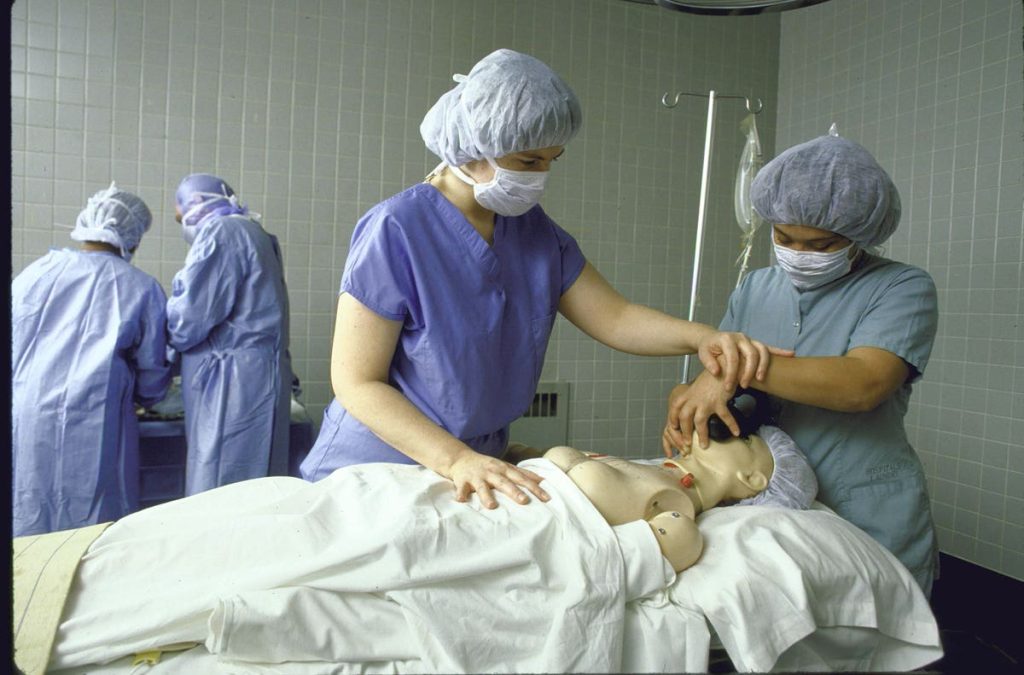American employers are still having great difficulty filling many jobs. Some – especially those in professional services, health care, education, information technology and advanced manufacturing – require education or technical skills that too few workers have (while others, like those in leisure and hospitality or child/elder care, pay too little for the demands they make on workers).
Nearly half of all Americans lack any postsecondary credential, without which it is very hard to generate higher earnings. Those without more education or training often languish in extremely low-paying jobs in sectors like elder care, building maintenance and food service; with more skills, they could get higher-quality jobs.
Yet Congress is reluctant to spend more on training. The current bill that funds workforce development services and training through the Department of Labor – the Workforce Innovation and Opportunity Act (WIOA) – is up for reauthorization. While most Democrats on the House Committee on Education and Labor are willing to invest significantly more funds, their Republican counterparts are mostly reluctant to do so.
Why are they reluctant? Conservatives claim that currently the money is poorly spent, with too little going to actual training and too much being spent on ineffective programs. At least on the first point, they seem to be correct – out of the roughly $7B that the Labor Department receives through WIOA, only about a half billion are spent on training. On the other hand, important other services – like job search assistance and testing or counseling – are also funded with this money at American Job Centers (or AJCs – formerly called One-Stop offices).
But overall the amount of spending is too low. In a $25T economy with 150M adult workers, our total expenditures on workforce development amount to less than .1% of GDP – an absurdly small amount. Most other industrial countries, especially in the European Union, spend several times that amount on what they call “active labor market policies” (their version of workforce development).
Though the federal government spends hundreds of billions of dollars on higher education – including nearly $30B on Pell grants for poor college students and much more on loans – very little of this money goes to job training at community colleges. Indeed, Pell grants can now only be spent on for-credit programs requiring at least 15 weeks to complete – which rules out many effective training efforts.
Other analysts argue that the WIOA dollars are spent on ineffective programs – and the rigorous evaluation studies show mixed evidence. Still, the most plausible results suggest that the small amounts of training dollars that workers can get in Individual Training Account (ITA) vouchers – on average, just over $2000 each – can generate earnings gains of $1500-2000 per year on average. If these persist over time, the rate of return on the small dollars in ITAs look pretty substantial – even if most trainees remain in fairly low-wage jobs. And other dollars spent on core (assisted job search) or intensive (career counseling and testing) services appear to be very cost-effective as well.
If we want to get better earnings gains for workers, we simply have to spend more federal money on training. In certificate programs at community colleges, longer-term programs that are more expensive generate higher earnings than shorter-term ones. And the very best training programs – those that target specific sectors of the economy and bring together employers and training providers plus support services – generate lasting earnings increases of $5000 or more for their trainees. These programs also tend to cost at least $10,000 per trainee.
But, given the reluctance of many in Congress to spend significantly more on WIOA in its current form, what should the priorities be for any new workforce development funding – within WIOA or elsewhere?
First, the very best sector-based programs need to be scaled. Substantial dollars should be spent on these programs, along with research and evaluation to figure out exactly what makes them so good and whether or not scaling works. We can also make sure that the quality of the jobs ultimately attained by these trainees is better than what many currently have.
Second, support services for low-income youth or adults seem to be critical – whether they include job search assistance and career guidance or child care and transportation. We need to provide more such supports – at our AJCs or community colleges.
Third, there is broad support for apprenticeships and other forms of work-based learning or on-the-job training. Here the evidence base is thinner, but what we know is promising. States are innovating a great deal in their attempts to provide more apprenticeships, and they deserve more federal support in this regard. If we can streamline the hurdles employers face in registered apprenticeship programs, to make them more employer-friendly, their take-up rates would no doubt rise.
Fourth, data on both the labor market and program impacts need to be improved. Our ability to target funding to the most successful programs would improve with better data on individual trainees, both before and after they receive training, relative to comparison groups. Efforts to improve data, like Credential Engine, deserve more support – as do efforts to improve labor market data at the local or state level.
Finally, Pell grants should be extended to shorter-term programs and even some that are not for credit – which can still generate significantly higher earnings for workers. But appropriate safeguards are needed to make sure that money is funneled only to effective programs. Three different bills in Congress have been proposed that would do that, and these need to be carefully debated until a compromise bill is passed.
In short, our economy desperately needs more job training and worker services; and greater dollars must be spent where they could have the most positive impact.
Read the full article here
